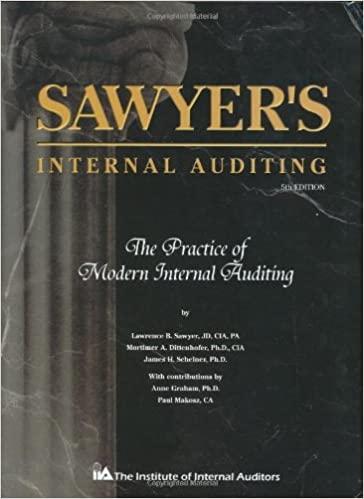Answered step by step
Verified Expert Solution
Question
1 Approved Answer
The net income for the fiscal year just ended is $ 2 , 0 0 0 , 0 0 0 and MPS expects the net
The net income for the fiscal year just ended is $ and MPS expects the net income will decrease by $ per year for the next years if no changes are made. In order to combat the expected decline in the lawn care and snow removal business, MPS would like to expand its business by manufacturing its own brand of lawn mower and snow blower for sale. They have hired a market research firm last year for $ to conduct a market study. MPS is now considering whether to build a manufacturing plant to manufacture their own brand of lawn mower and snow blower for sale. If MPS decide to pursue this project, the manufacturing plant would be built on a piece of land that is currently owned by the company. The land is currently vacant and has been vacant for years since the companys inceptionIf the company were to sell the land today, it could be sold for $Another option is to rent the land out to another company.If MPS were to rent it out, it could get $ of rental income per year for the next years. Based on the market research conducted last year, MPS has made the following assumptions with respect to the sales and the production cost of the lawn mower and snow blower:
Lawn Mower: Sales in units
Year Year Year Year Year Year Year Year
Price for Year is $ per unit and the price is expected to increase by per year Variable production cost for Year is $ per unit and this cost is expected to increase by per year Fixed production cost for Year is $ and is expected to remain constant.
Snow Blower: Sales in units
Year Year Year Year Year Year Year Year
Price for Year is $ per unit and the price is expected to increase by per year. Variable production cost for Year is $ per unit and this cost is expected to increase by per year Fixed production cost for Year is $ and is expected to increase by per year. The manufacturing plant will cost $ to build and it belongs to a tax asset class with a CCA rate of The equipment within the manufacturing plant that is used to produce and assemble the lawn mower and snow blower will cost $ and it belongs to a tax asset class with a CCA rate of The project is estimated to have a life of years, and at the end of the project life, the manufacturing plant and the equipment is estimated to have a market value of $ and $ respectively.The tax rate associated with this project is and the cost of borrowing WACC related to this project is MPS will purchase raw materials before production and sale, giving rise to an investment in inventory and accounts payable as MPS does not pay for all of its purchases by cash right away. It will maintain cash as a buffer against unforeseen expenditures and its credit sales will generate account receivable. MPS has made the following assumptions relating to these items:
Before MPS can start producing lawn mower and snow blower, they need to buy $ worth of raw materials nuts bolts etc. and they will pay for all of this with cash.
During Year MPS forecast that of the annual sales will be on credit, meaning the credit sales will not be collected at the end of Year and will be collected in Year leading to an AR balance at the end of Year
During Year all of the fixed production cost will be paid for by cash. For the variable production cost, MPS estimated that it can defer $ of payment to vendors at year end and pay for them in Year leading to an AP balance at the end of Year
During Year after the production of lawn mower and snow blower has started, MPS determine that it should have $ worth of finished goods lawn mower and snow blower on hand at all time to avoid potential stock out issue, leading to an inventory balance at the end of Year
During Year MPS determine that it should have a minimum cash balance of $ at all time.
From Year to Year the end of project life the working capital level for each year is expected to remain the same as a of sales as the one calculated in Year
At the end of the project, it is expected that MPS can sell the remaining finished goods, raw materials nuts bolts etc and all of its associated accounts receivable and payable that it has on hand to other companies. However, it is unreasonabxle to expect that MPS can receive full value from the recovery of these working capital items. A reasonable expectation is that these working capital items will get of its original value during this liquidation sale. What is the best decision for MPS at this time? Discuss the multiple options that are available to MPS at this time and support your answer with detail calculation of the project financial performance under each scenario.which criteria you use for decision &why?
Step by Step Solution
There are 3 Steps involved in it
Step: 1

Get Instant Access to Expert-Tailored Solutions
See step-by-step solutions with expert insights and AI powered tools for academic success
Step: 2

Step: 3

Ace Your Homework with AI
Get the answers you need in no time with our AI-driven, step-by-step assistance
Get Started


